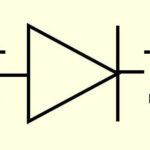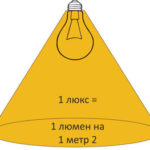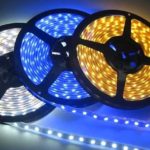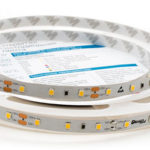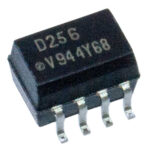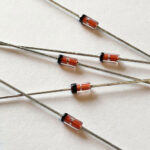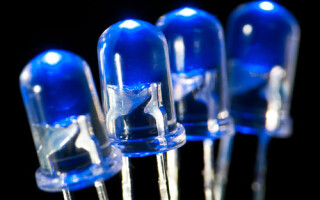LEDs are rapidly replacing incandescent bulbs from almost all areas where their positions seemed unshakable. Competitive advantages of semiconductor elements proved to be convincing: low cost, long service life, and, most importantly, higher efficiency. If for lamps it did not exceed 5%, then some LED manufacturers declare the transformation into light of at least 60% of the electricity consumed. The veracity of these statements remains on the conscience of marketers, but the rapid development of consumer properties of semiconductor elements does not cause any doubts.
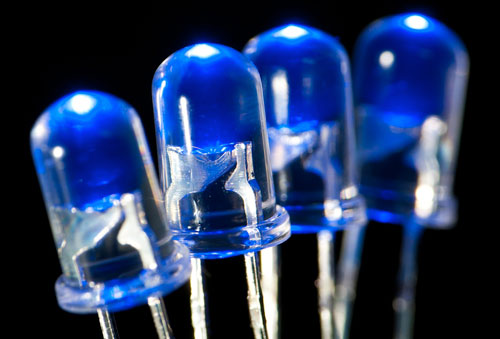
Content
What is an LED and how it works
Light-emitting diode (LED, LED) is a conventional semiconductor diode, made on the basis of crystals:
- gallium arsenide, indium phosphide or zinc selenide - for emitters of the optical range;
- gallium nitride - for devices of the ultraviolet section;
- lead sulfide - for elements emitting in the infrared range.
The choice of these materials is due to the fact that the p-n junction of diodes made from them emits light when a forward voltage is applied. For ordinary silicon or germanium diodes, this property is very weakly expressed - there is practically no glow.
The emission of the LED is not related to the degree of heating of the semiconductor element, it is caused by the transition of electrons from one energy level to another during the recombination of charge carriers (electrons and holes). The light emitted as a result is monochromatic.
A feature of such radiation is a very narrow spectrum, and it is difficult to select the desired color with light filters. And some colors of the glow (white, blue) with this manufacturing principle are unattainable. Therefore, at present, a technology is widespread in which the outer surface of the LED is covered with a phosphor, and its glow is initiated by p-n junction radiation (which can be visible or lie in the UV range).
LED device
The LED was originally arranged in the same way as a conventional diode - a p-n junction and two outputs. Only case made of transparent compound or made of metal with a transparent window for observing the glow. But they learned to embed additional elements into the shell of the device. For example, resistors - to turn on the LED into the circuit of the required voltage (12 V, 220 V) without external piping. Or a generator with a divider to create flashing light emitting elements. Also, the case began to be covered with a phosphor, which glows when the p-n junction is ignited - this is how it was possible to expand the capabilities of the LED.
The trend towards the transition to leadless radio elements has not bypassed the LEDs. SMD devices are rapidly capturing the lighting market, with advantages in production technology. Such elements do not have conclusions. The P-n junction is mounted on a ceramic base, filled with a compound and coated with a phosphor. Voltage is applied through contact pads.
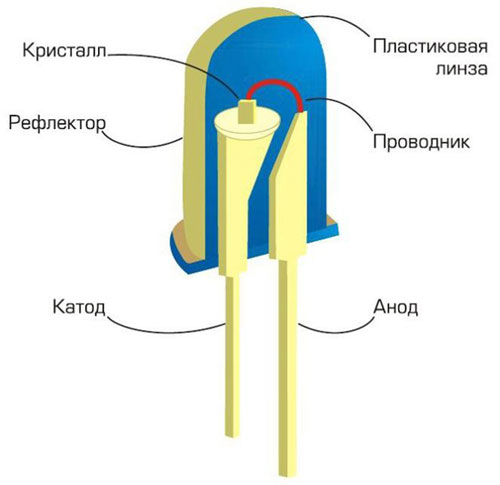
Currently, lighting devices began to be equipped with LEDs manufactured using COB technology. Its essence is that several (from 2-3 to hundreds) p-n junctions are mounted on one plate, connected into a matrix. From above, everything is placed in a single case (or an SMD module is formed) and covered with a phosphor. This technology has great prospects, but it is unlikely that it will completely replace other versions of SD.
What types of LEDs exist and where they are used
LEDs of the optical range are used as display elements and as lighting devices. Each specialization has its own requirements.
Indicator LEDs
The task of the indicator LED is to show the status of the device (power supply, alarm, sensor operation, etc.). In this area, LEDs with p-n junction glow are widely used. It is not forbidden to use devices with a phosphor, but there is not much point.Here, the brightness of the glow is not in the first place. The priority is contrast and a wide viewing angle. Output LEDs (true hole) are used on instrument panels, output LEDs and SMD are used on boards.
Lighting LEDs
For lighting, on the contrary, elements with a phosphor are mainly used. This allows you to get sufficient light output and colors that are close to natural. Lead-out LEDs from this area are practically squeezed out by SMD elements. COB LEDs are widely used.
In a separate category, we can distinguish devices designed to transmit signals in the optical or infrared range. For example, for remote controls for household appliances or for security devices. And elements of the UV range can be used for compact ultraviolet sources (detectors for currencies, biological materials, etc.).
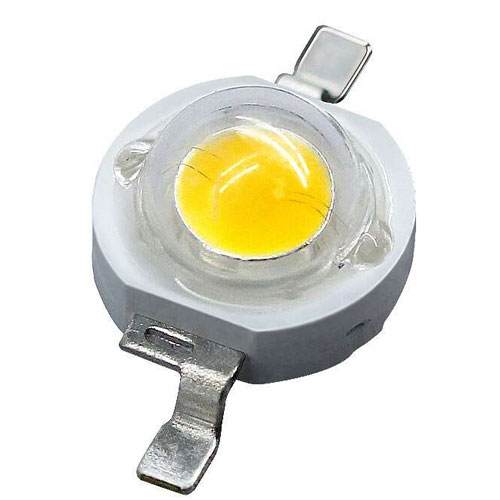
Main characteristics of LEDs
Like any diode, LED has general, "diode" characteristics. Limit parameters, the excess of which leads to the failure of the device:
- maximum allowable forward current;
- maximum allowable forward voltage;
- maximum allowable reverse voltage.
The remaining characteristics are of a specific "LED" character.
Glow color
Glow color - this parameter characterizes the LEDs of the optical range. In lighting fixtures, in most cases, white with different light temperature. The indicator ones can have any of the visible colors.
Wavelength
This parameter to a certain extent duplicates the previous one, but with two caveats:
- devices in the IR and UV ranges do not have visible color, therefore for them this characteristic is the only one that characterizes the radiation spectrum;
- this parameter is more applicable for LEDs with direct emission - elements with a phosphor emit in a wide band, so their glow cannot be unambiguously characterized by a wavelength (what wavelength can a white color have?).
Therefore, the wavelength of the emitted wave is a fairly informative figure.
Current consumption
The consumed current is the operating current at which the brightness of the radiation is optimal. If it is slightly exceeded, the device will not quickly fail - and this is its difference from the maximum allowable. Reducing it is also undesirable - the radiation intensity will drop.
Power
Power consumption - everything is simple here. At direct current, it is simply the product of the consumed current and the applied voltage. Manufacturers of lighting technology introduce confusion into this concept by indicating the equivalent power on the packaging in large numbers - the power of an incandescent lamp, the luminous flux of which is equal to the flux of a given lamp.
Visible solid angle
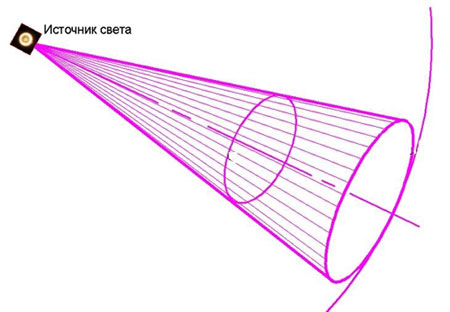
The apparent solid angle is most easily represented as a cone emanating from the center of the light source. This parameter is equal to the opening angle of this cone. For indicator LEDs, it determines how the alarm will be seen from the outside. For lighting elements, the luminous flux depends on it.
Maximum light intensity
The maximum luminous intensity in the technical characteristics of the device is indicated in candelas. But in practice it turned out to be more convenient to operate with the concept of a luminous flux. The luminous flux (in lumens) is equal to the product of the luminous intensity (in candela) and the apparent solid angle.Two LEDs with the same luminous intensity give different illumination at different angles. The larger the angle, the greater the luminous flux. So it is more convenient for the calculation of lighting systems.
Voltage drop
Forward voltage drop is the voltage that drops across the LED when it is on. Knowing it, one can calculate the voltage required, for example, to open a series chain of light-emitting elements.
How to find out what voltage an LED is rated for
The easiest way to find out the nominal voltage of an LED is to consult the reference literature. But if you come across a device of unknown origin without marking, then you can connect it to an adjustable power source and smoothly raise the voltage from zero. At a certain voltage, the LED will flash brightly. This is the operating voltage of the element. There are a few things to keep in mind when doing this check:
- the device under test can be with a built-in resistor and is designed for a sufficiently high voltage (up to 220 V) - not every power source has such an adjustment range;
- LED radiation may lie outside the visible part of the spectrum (UV or IR) - then the moment of ignition cannot be visually determined (although the glow of an IR device can in some cases be seen through a smartphone camera);
- it is necessary to connect the element to a constant voltage source with strict observance of polarity, otherwise it is easy to disable the LED with a reverse voltage that exceeds the capabilities of the device.
If there is no confidence in knowing the pinout of the element, it is better to raise the voltage to 3 ... 3.5 V, if the LED does not light up, remove the voltage, change the connection of the source poles and repeat the procedure.
How to determine the polarity of an LED
There are several methods for determining the polarity of the leads.
- For leadless elements (including COB), the polarity of the supply voltage is indicated directly on the case - by symbols or tides on the shell.
- Since the LED has a regular p-n junction, you can ring it with a multimeter in diode test mode. Some testers have a measuring voltage sufficient to light the LED. Then the correct connection can be controlled visually by the glow of the element.
- Some devices manufactured by CCCP in a metal case had a key (protrusion) in the cathode area.
- For output elements, the cathode output is longer. On this basis, it is possible to determine the pinout only for non-soldered elements. Used LED leads are shortened and bent for mounting in any way.
- Finally, find out the location anode and cathode perhaps the same method as for determining the voltage of the LED. The glow will be possible only when the element is turned on correctly - the cathode to the minus of the source, the anode to the plus.
Technology development does not stand still. Until a few decades ago, the LED was an expensive toy for laboratory experiments. Now it's hard to imagine life without him. What will happen next - time will tell.
Similar articles:
